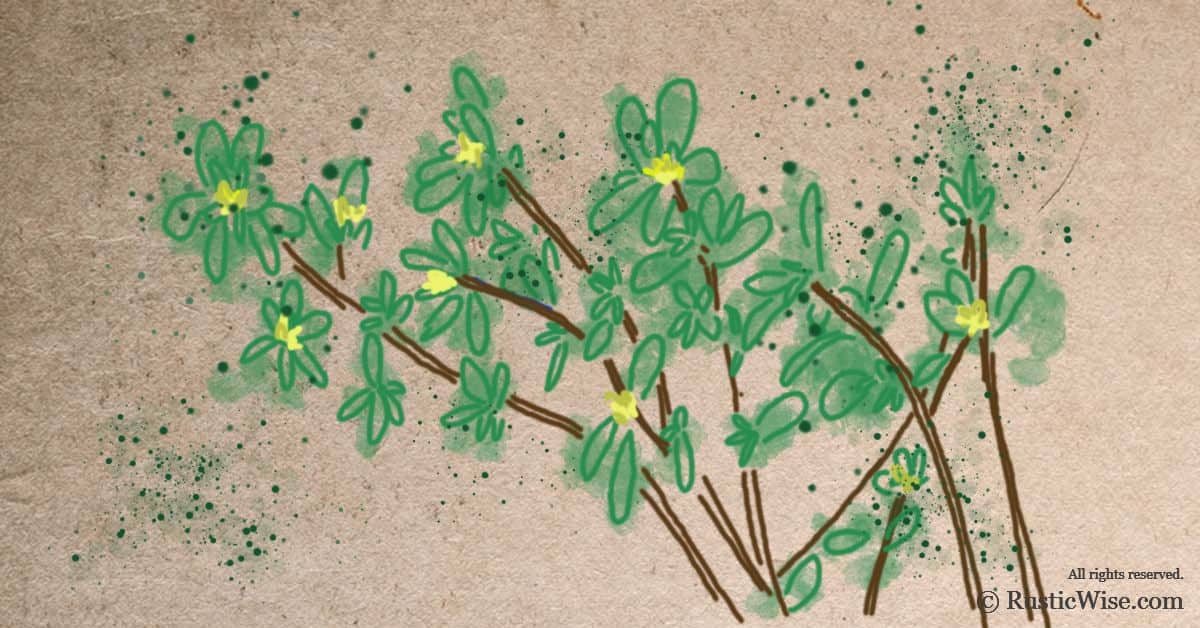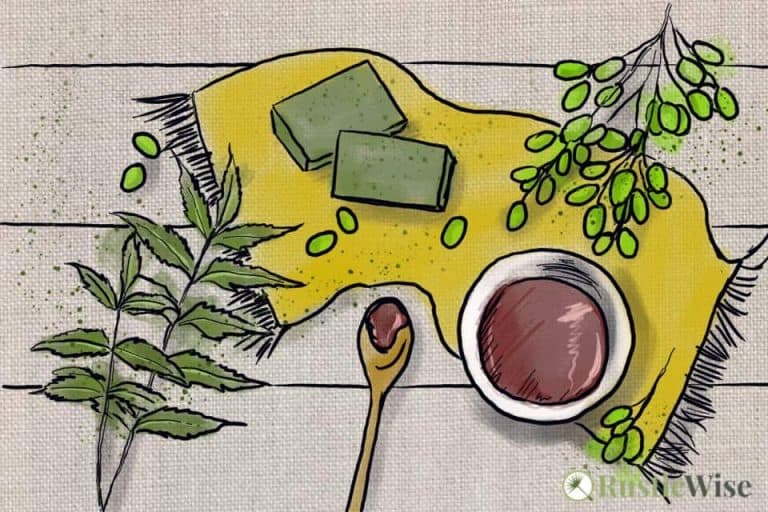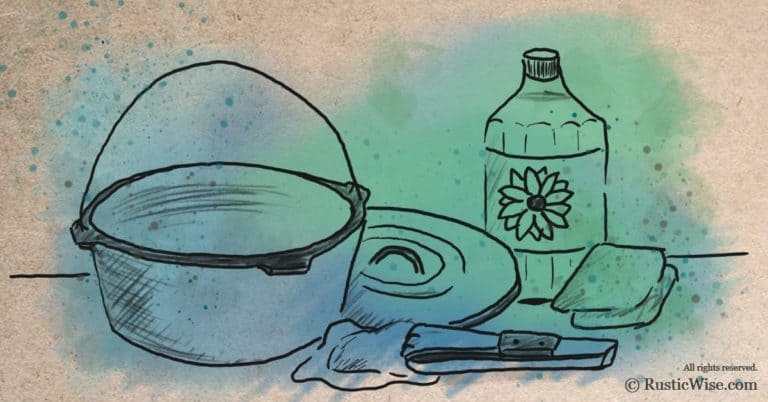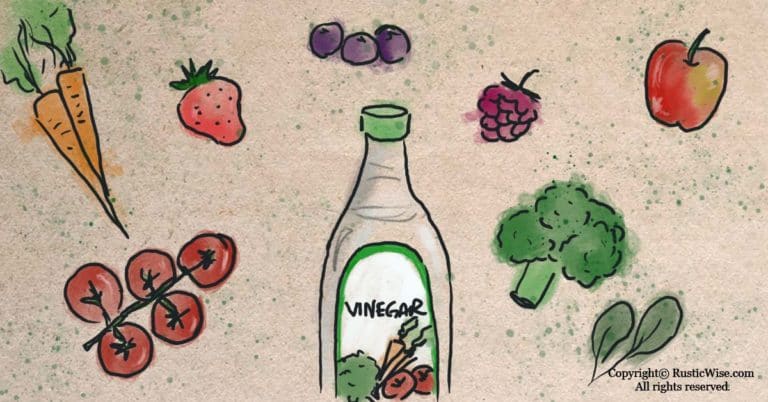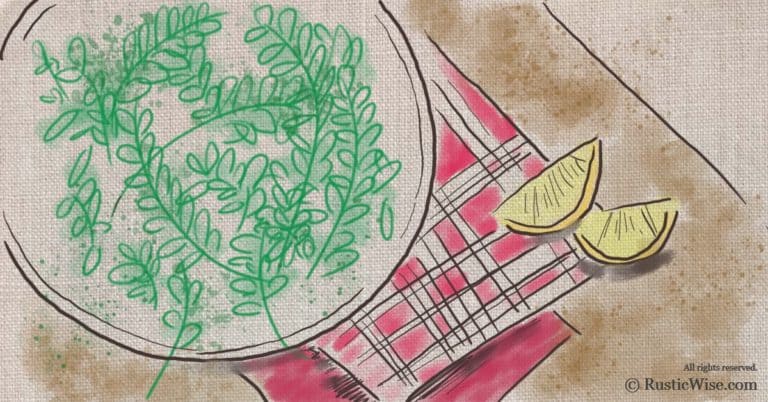What is Purslane Good For: A Healthy Wild Plant
RusticWise is supported by its readers. When you purchase through links on our site, we may earn an affiliate commission. As an Amazon Associate, we earn from qualifying purchases. Thank You!
Purslane or Portulaca oleracea is a ground-hugging succulent herb. It’s a member of the Portulacaceae family. There are more than fifty types of purslane around the world, but Portulaca oleracea is one of the most common varieties you’ll find in many countries.1
Other names it goes by include pigweed, hogweed, pusley, or garden/common purslane.
Some consider it an invasive weed, while others forage it. It’s a great edible garden “weed.” You might see purslane growing between the cracks of your sidewalk, in your garden, or even in your flower pots.
We like purslane so much that we decided to plant it in our garden.
What is purslane good for? There are so many health benefits of purslane. It’s packed with vitamins, minerals, antioxidants, and even omega-3 fatty acids.Purslane is a mild-flavored plant which makes it easy to incorporate into many different recipes. It’s also coveted for its medicinal and anti-aging properties.
Identifying purslane
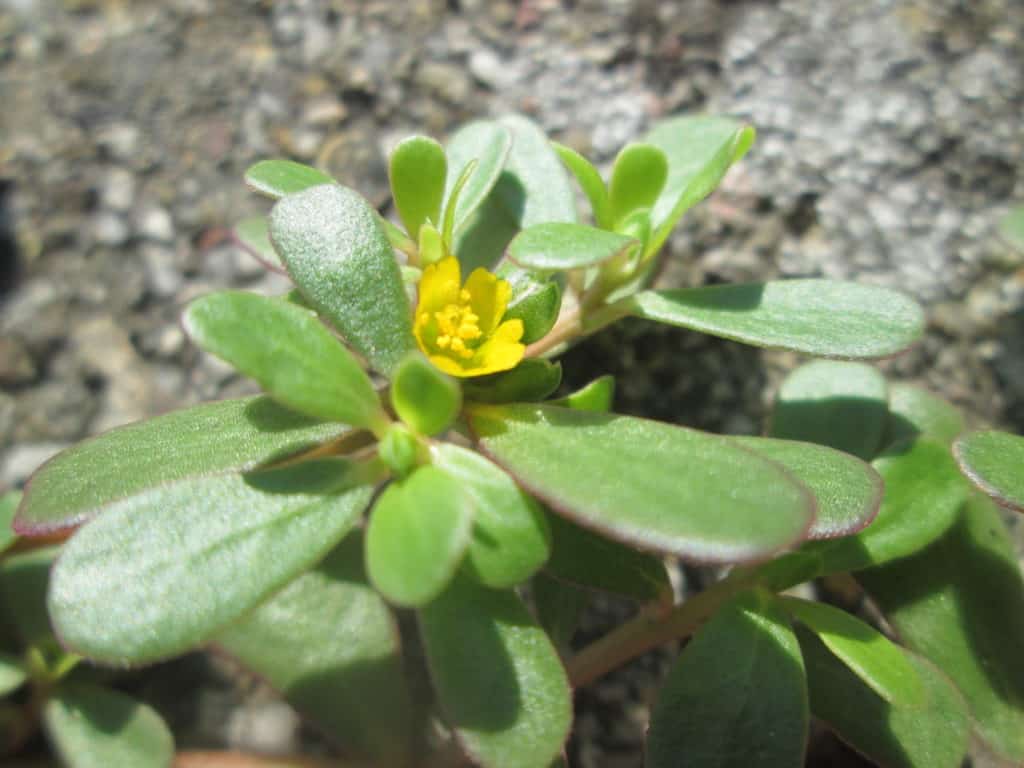
Credit: Andreas Rockstein/ Flickr, Portulaca oleracea
Purslane is an annual plant that thrives in areas of sunny farmlands or areas with compacted soil—essentially anywhere that humans have affected the land. This hardy herb also can withstand drought-like conditions.
It has smooth, plump, green succulent leaves with a slight tint of red. It also has red stems that grow to 10–25 cm (4–10 inches) long. Characterized by its fleshy, rounded leaves, purslane grows in small clusters. It produces an abundance of black seeds.
It’s a ground-covering plant that grows horizontally. Purslane’s deep and expansive roots help hold moisture in the soil which benefits surrounding plants.
Are you looking for its flowers? You might need to wake up early. Its small yellow flowers (each having five petals) are hidden amongst the stems and only show their faces for a short time in the morning. 2
Health benefits of purslane
So what is purslane good for? Purslane is a power food, and best of all it’s growing wild for all to harvest. It’s jam-packed with vitamins, minerals, antioxidants, and surprisingly, omega-3 fatty acids. Let’s take a closer look at some purslane health benefits.
Dense, nutrient-dense, that is
It’s loaded with nutrients:
- Vitamin A – good for healthy skin, teeth, bones, and soft tissue.
- Vitamin C – essential to heal wounds, helps with healthy teeth and gums.
- Magnesium – promotes good overall cardiovascular health.
- Manganese – helps with the metabolism of cholesterol, amino acids, etc.
- Potassium – helps regulate blood pressure, fluid balance, nerve signals, and muscle contractions in the body.
- Iron – helps create energy from nutrients.
- Calcium – healthy bones and teeth.
Purslane also has trace amounts of vitamins B1, B2, B3, folate, copper, and phosphorus.
For people who are dieting, purslane packs in a lot of nutrients at only 16 calories per 100 grams (3.5 oz) making it a great addition as part of a healthy diet.
A surprising source of healthy fatty acids
When most people think of omega-3s, we think salmon, or tuna. But purslane contains two types of omega-3 fatty acids: ALA and EPA. While most plants contain ALA, EPA is usually only found in animals.
Move over spinach —purslane contains five to seven times more ALA!
Eating purslane
Purslane can be eaten fresh, or cooked. I love fresh purslane. The best way to get a taste is to pull off a few fresh leaves and bite them in half. You’ll be pleasantly surprised by its juiciness (it’s made of 93 percent water after all), and its mild, tangy flavor. Personally, I find it tastes like a tangy cucumber!
Think of it as a leafy green and use it the same way you would lettuce or spinach. Toss fresh leaves in salad. Add to a sandwich. Blend the leaves (you can also throw in the stems) to make a green juice. Use it as a tasty garnish to any dish.
You can also cook it. When cooked, it has a bit of a gelatinous texture. This makes it a great natural ingredient to thicken soups and stews.
Don’t confuse purslane with this poisonous lookalike
The hairy-stemmed spurge (Euphorbia vermiculata) is a poisonous plant that has leaves that look similar to purslane and also has reddish stems. As the name implies, the hairy-stemmed spurge features fine scattered hairs along the stems. It has a milky juice inside the stem which purslane doesn’t have.
Please don’t eat anything growing wild unless you’re 100 percent sure you’ve identified it correctly. Ask a local specialist for help if you’re unsure.
Medicinal uses of purslane
As with any medicinal use of herbs, use in moderation and please speak with your doctor to see if purslane is safe for you.
Here’s a few ways purslane is used for healing:
- Using the raw juice. Purslane has similar healing powers as aloe vera. Leaves are plump with beneficial “juice.” Squeeze the juice directly onto skin for a cooling, soothing respite from sunburn, insect bites, minor cuts and skin ailments.
- Making a poultice out of mashed leaves. Mash up the leaves to make a poultice to alleviate headaches. Purslane’s anti-inflammatory properties also help reduce swelling of joints and sore muscles.
- Ingesting internally. Ingesting purslane helps with many internal bodily functions. Eat fresh leaves or make a juice. To make purslane juice:
- Blend together leaves and stem to make a juice. An apple thrown in helps to sweeten the taste. Since purslane has a gelatinous quality, add water until you get the desired consistency. Strain purslane juice to remove the pulp.
- Consuming purslane is a great way to get in your daily vitamins, nutrients and antioxidants for the day. It also contains melatonin to regulate sleep cycles for a peaceful slumber.
Purslane beauty benefits
As purslane is comprised of mineralized water (great for hydration), antioxidants, and nutrients, it makes for a great natural addition to your beauty regiment. It also contains telomerase which is an anti-aging enzyme. You’ll find some pricey beauty lines that feature purslane in the ingredients.
Or, you could just pick some purslane in your garden and get creative with your own DIY facials and baths!
Try adding a few stems and leaves to your bath water. You can also make a purslane poultice to cleanse, hydrate, and tone your face.
Conclusion
What is purslane good for? If you’ve been trying to rid your garden of “pesky” purslane, it might be time to rethink your strategy. Purslane is good for so many things. With its rockstar nutritional profile and medicinal properties, it’s a shame we’re not using more of it.
Purslane salad, anyone?

Author: Theresa Tesolin
Theresa is co-founder of RusticWise. She helps people unleash their inner DIY spirit by encouraging them to get dirty and make or grow something from scratch.

